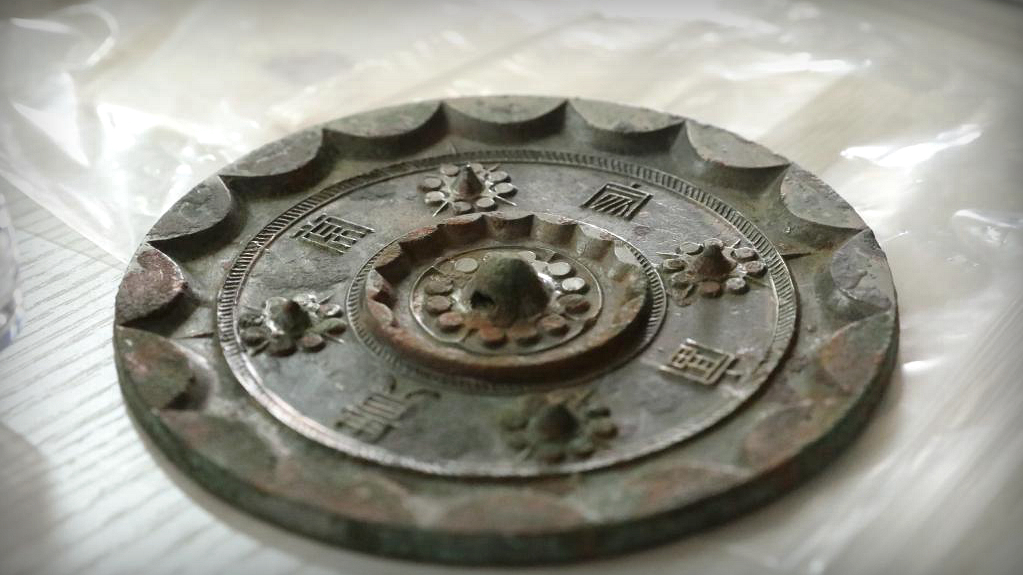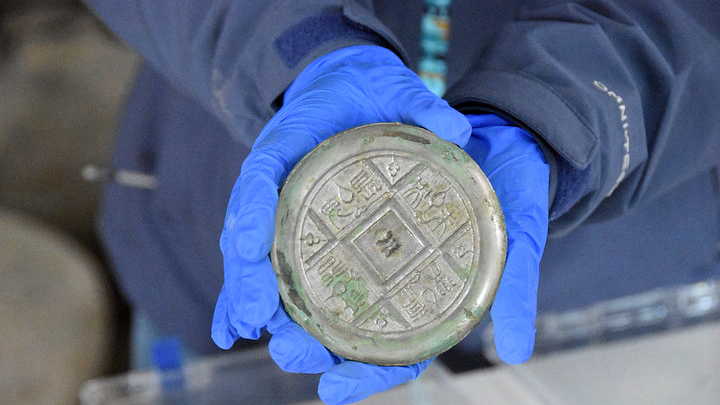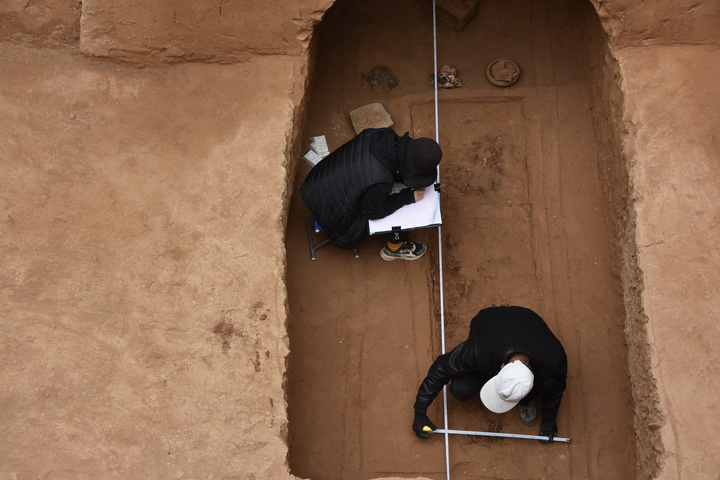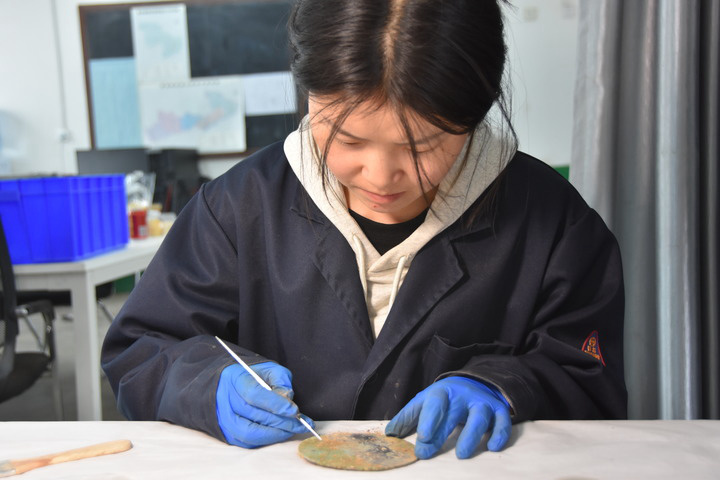
A bronze mirror shows exquisite patterns after cleaning in Xixian New Area, Shaanxi Province, northwest China, April 13, 2021. /Xinhua
A bronze mirror shows exquisite patterns after cleaning in Xixian New Area, Shaanxi Province, northwest China, April 13, 2021. /Xinhua

An archaeologist shows a bronze mirror in Xixian New Area, Shaanxi Province, northwest China, April 13, 2021. /Xinhua
An archaeologist shows a bronze mirror in Xixian New Area, Shaanxi Province, northwest China, April 13, 2021. /Xinhua
More than 80 lustrous bronze mirrors were unearthed at a large cemetery dating back over 2,000 years in Xixian New Area, northwest China's Shaanxi Province, according to the Shaanxi Provincial Institute of Archaeology.
The Dabaozi Cemetery is home to more than 400 tombs. Excavation work and archaeological clearance started at the ruins in May 2020 and led to the discovery of over 2,000 pieces of cultural relics, such as pottery and bronze ware, from the Western Han Dynasty (202 BC to 8 AD).
The archaeologists found over 80 bronze mirrors of various sizes and styles during a recent excavation at the cemetery, which spans the late Warring States Period (475 to 221 BC) to the late Western Han Dynasty.

Archaeologists carry out the excavation work at the Dabaozi Cemetery in Xixian New Area, Shaanxi Province, China, April 13, 2021. /Xinhua
Archaeologists carry out the excavation work at the Dabaozi Cemetery in Xixian New Area, Shaanxi Province, China, April 13, 2021. /Xinhua
Due to the difference in casting techniques in various periods, this batch of bronze mirrors vary a lot in their sizes, with the diameter ranging from 8 centimeters to 22.1 centimeters, said Zhu Yingpei, head of the archaeological team at the cemetery.
Most of the mirrors are well-preserved with exquisite patterns and different inscriptions and some still have high gloss. Among them, the archaeologists found one that still reflects clear images.

An archaeologist is cleaning a bronze mirror in Xixian New Area, Shaanxi Province, China, April 13, 2021. /Xinhua
An archaeologist is cleaning a bronze mirror in Xixian New Area, Shaanxi Province, China, April 13, 2021. /Xinhua
According to archaeologists, most of the mirrors were placed close to the head or around the upper body of the tomb owners, with inscriptions showing people's wishes for a better life. And their owners were not only women but also men.
The ancient tombs are believed to belong to the upper-class residents of yore, and the newly found mirrors provide abundant materials for studying the daily life of local people in the Qin (221-206 B.C.) and Han (202 B.C.-AD 220) dynasties and the development and evolution of bronze mirrors, said Zhu.

